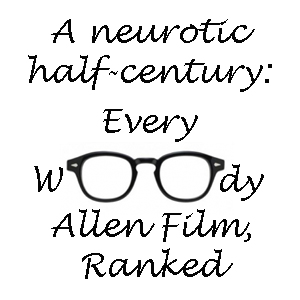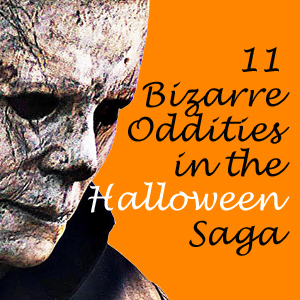The “Halloween” saga is infamous for its oddities and mistakes and its tendency to set aside established plot threads. Some of them are well-known, even by casual observers: the fact that “Halloween III” isn’t a Michael Myers film, the way “Halloween 5” reimagines the ending of “Halloween 4” to avoid having a child as a killer, and the three relaunches of the saga in “Halloween H20,” Rob Zombie’s “Halloween” and the new “Halloween,” which hit theaters earlier this month.
But the franchise also includes more subtle – but no less strange – oddities. Here’s a look at 11 of them:
1. Michael always finds a white William Shatner mask
Sometimes the movies tell us where Michael gets his mask. In “Halloween” (1978), he steals it from a hardware store, and he’s still wearing it in “Halloween II” (1981). In Rob Zombie’s “Halloween” films, he takes the mask from his sister’s boyfriend, then hides it under the floorboards for future use.
In “Halloween 4,” Jamie imagines encountering Michael in a drug store that sells that mask, so we can surmise he actually does steal that mask later. So we get this bizarre situation: Michael is wearing a mass-produced mask that became popular because of his own serial killings from a decade earlier. He still has that mask in “Halloween 5,” but it’s unexplained how he gets one for “Halloween 6” or the “H20”/“Resurrection” saga.
2. In “Halloween II” (1981), Michael leaves a clue for no reason
Dr. Loomis pursues Michael into a school and sees “Samhain” written in blood on the blackboard with nice handwriting. Eventually, in “H6,” we learn that Michael’s strength and near-invulnerability come from the Thorn cult, which worships Samhain (Halloween, more or less), which symbolizes the start of the dark half of the year. Narratively, it ties together, but there’s no character-based reason why Michael would write “Samhain” on the wall.
3. A main character disappears from “Halloween III”
Two people – the doctor Daniel and the young Ellie – pursue the mystery of the deadly Silver Shamrock masks. Then Ellie disappears from the narrative. There is a screenwriting logic to it: We get the shock of an android version of Ellie attacking Daniel after they have seemingly reached safety. The problem is that we never learn Ellie’s fate; presumably, the bad guys kill her, but we don’t know for sure, and it remains off-putting for a main character to drift out of the narrative like that.
4. Random, off-screen deaths claim more major characters than Michael himself
Laurie’s birth parents die off-screen in a car accident, and the Strodes adopt her. Laurie and her husband then die off screen, in an “accident,” between “Halloween II” and “H4,” leaving Jamie as an orphan who is adopted by the Carruthers family. We can presume that Laurie’s adoptive parents – are perhaps her husband’s parents too – are likewise dead, since surely they would’ve taken in Jamie.

Despite Jamie stabbing her adoptive mom in “H4,” Mr. and Mrs. Carruthers are alive and vacationing in “H5.” When Jamie is miraculously found alive in “H6,” the Carrutherses don’t visit her in the hospital. Perhaps they are again vacationing, but this saga being what it is, I wouldn’t be surprised if they are victims of an off-screen demise.
5. The credits of “Halloween 5” and “Halloween: Resurrection” have major typos
In evidence of how rushed “Halloween 5” was (it came out one year after “H4” became a hit and reinvigorated the saga), the director’s name is spelled wrong in the credits. Dominique Othenin-Girard is credited as Dominique Otherin-Girard. And in “H:R,” actress Katee Sackhoff is listed as Katee Sachoff, her only screen credit where the “k” is missing.
6. “Halloween 5” kills off Rachel and instead follows her annoying friends
Ellie Cornell’s Rachel is essentially in the Laurie role in “H4,” as a teenage babysitter. She’s killed off in the opening act of “H5,” which might be excusable as a way to establish the seriousness of Michael’s threat except that it leaves us with her four self-centered friends (who don’t even realize Rachel has been killed). One might assume that Cornell, like Jamie Lee Curtis before her, had had enough of the franchise. But the script always included Rachel’s demise.
7. The Myers house looks totally different in “Halloween 5”
In the original “Halloween,” the Myers house is two stories, with a front porch and two bedroom windows on the second floor. For “H6,” a balcony has been added between the second-floor windows. Fair enough. But the way the house looks in “H5” is inexplicable.
It’s Victorian, the second story is receded and narrower, and it has a tower off to the side; there’s no way it can be the same house. So even though it’s a perhaps a better house for a horror movie, and even though it’s the centerpiece location of “H5,” it’s possible many viewers didn’t realize it’s the Myers house.
8. Danielle Harris wanted to be in “Halloween 6”
The two previous entries nicely set up “H6” to be a trilogy-capper featuring Jamie’s final showdown with Michael. But Jamie is recast and quickly killed by Michael in the theatrical version, and gravely injured by Michael and finished off by the Thorn cult in the Producer’s Cut.
One might assume Danielle Harris, like Curtis before her, wanted out of the saga, but she actually went the extra mile to be in “H6”: She got legally emancipated in order to participate in the film at age 17, so the filmmakers wouldn’t have to deal with rules regarding minors. According to an IGN interview with Harris, the filmmakers then considered her for the role, but offered her less money than she was paid in “H4,” and also less than what she paid in legal fees to get emancipated. They ultimately cast J.C. Brandy, who looks nothing like Harris.
9. “Halloween H20” changes the timeline without telling viewers
If someone went into a screening of “H20” in 1998 coming off “H6” (which came out three years earlier), without reading about the movie beforehand, they’d be confused. “H20” does not start off with a montage making it clear this is a new timeline. The first clue comes from a Haddonfield hospital worker who knows about the Myers killings from 20 years ago, but not from 10, nine or three years ago.
On the other hand, Laurie faking her death and moving to California fits tidily with the previous saga, so we might think the hospital worker was referencing only the most famous night of killings. But then Laurie tells her backstory to her boyfriend without noting that she abandoned her daughter. Indeed, it seems out-of-character that she would abandon Jamie and start a new family, and that’s the biggest clue that this is a new timeline. But it’s totally possible a 1998 theater-goer might think Laurie did abandon Jamie and is somehow ignorant of what happened to her.
10. It takes Michael forever to reach Haddonfield in Rob Zombie’s “Halloween II”
Writer-director Zombie’s sequel starts in the wake of the events of “Halloween” (2007). The ambulance crashes into a cow on the way to the morgue and Michael escapes; it can’t be more than — if we’re being generous — 30 miles out of town. For no apparent reason, it takes Michael a whole year to get back to Haddonfield to resume his pursuit of Laurie and those around her, even though that’s his life’s sole purpose.
11. The first four films had novelizations … but almost no one can read them
2018’s “Halloween” has a novelization, making it the first movie in the series to be adapted to book form in 30 years. The first four films were novelized, but they are out of print, and nearly impossible to acquire for a reasonable price. Most libraries don’t stock older mass-market paperbacks. An Amazon search at the time of this writing lists “Halloween” at $225, “Halloween II” at $66, “Halloween III” at a comparatively affordable $23, and “Halloween IV” at $259.


